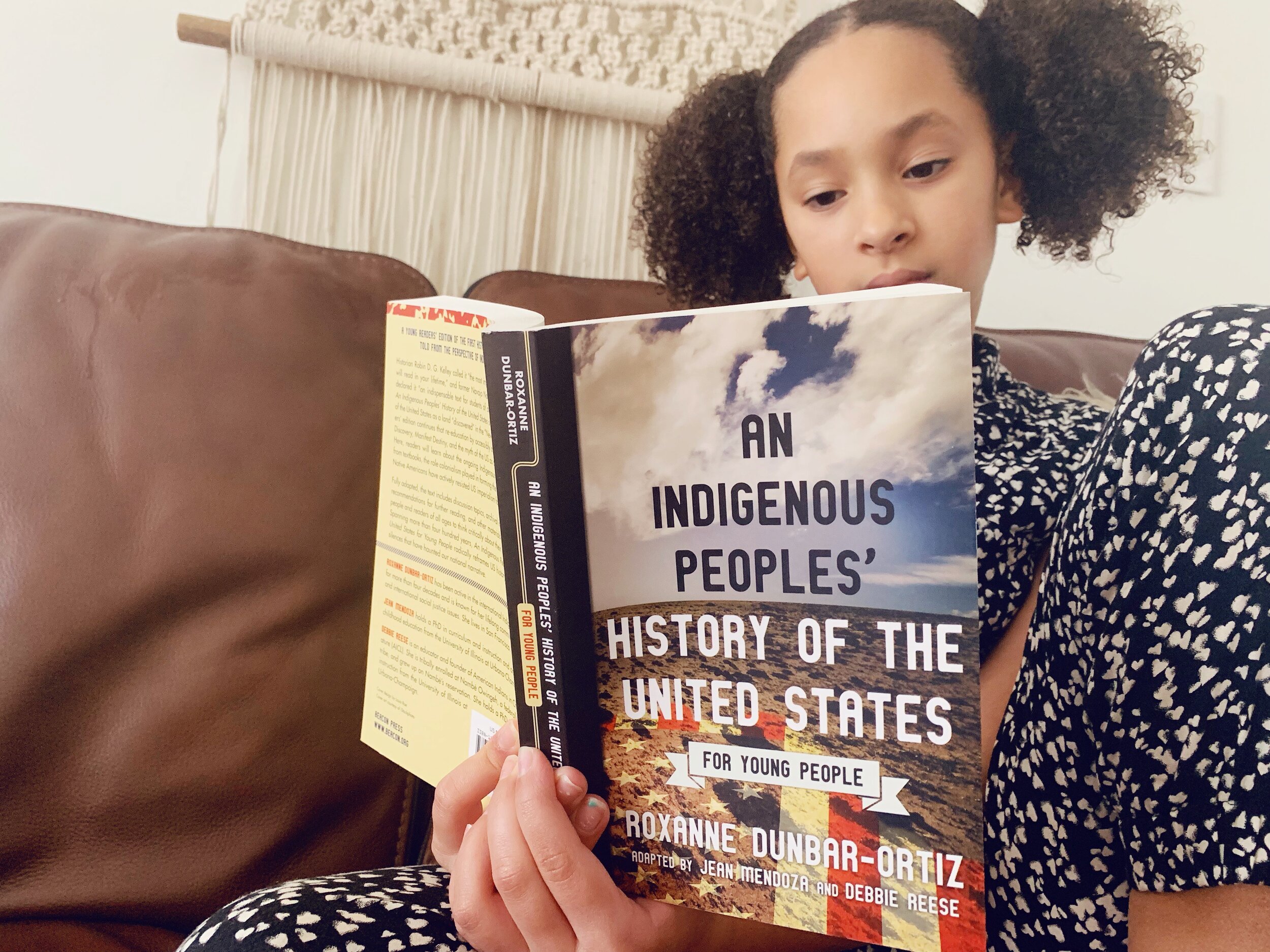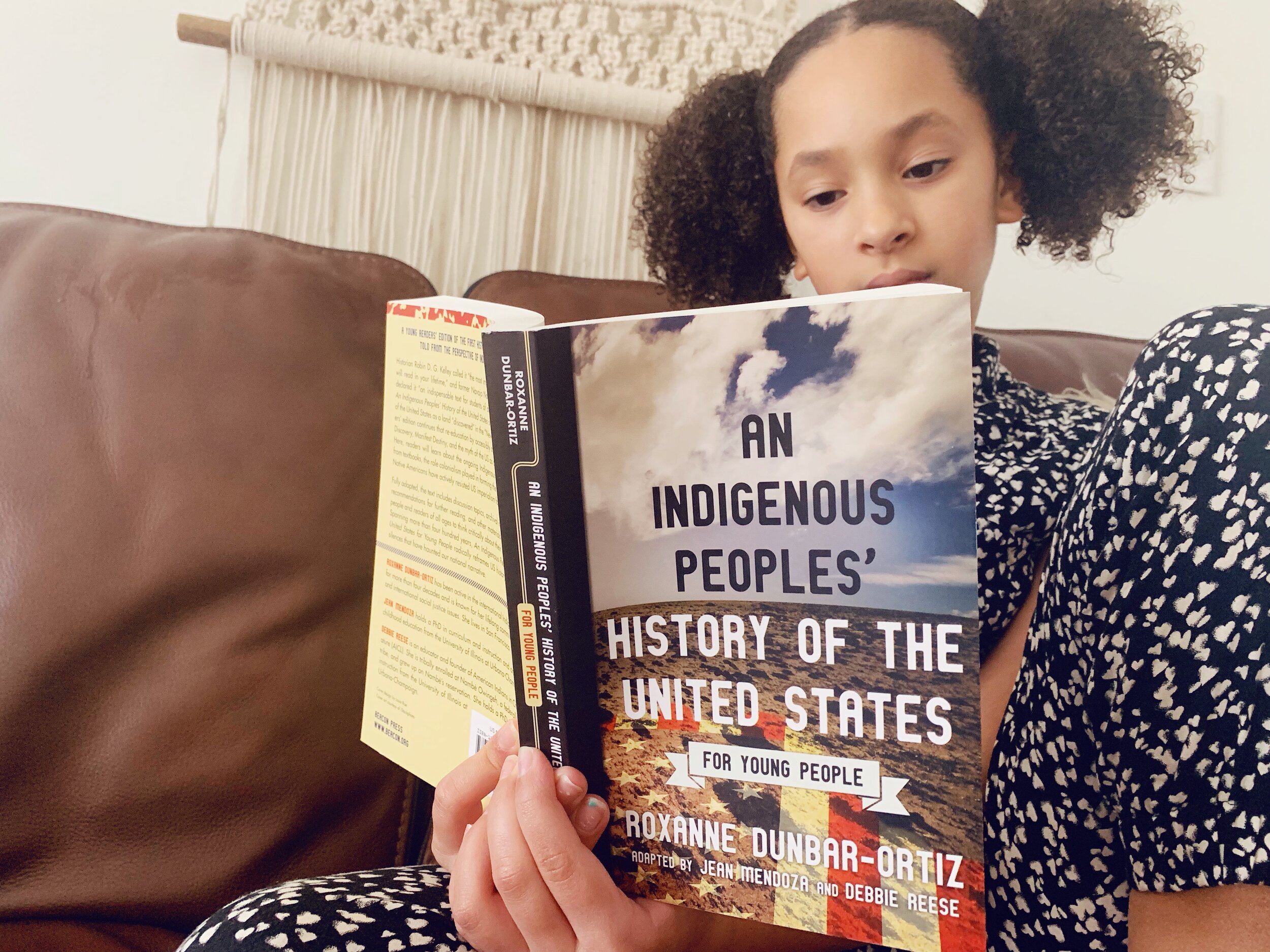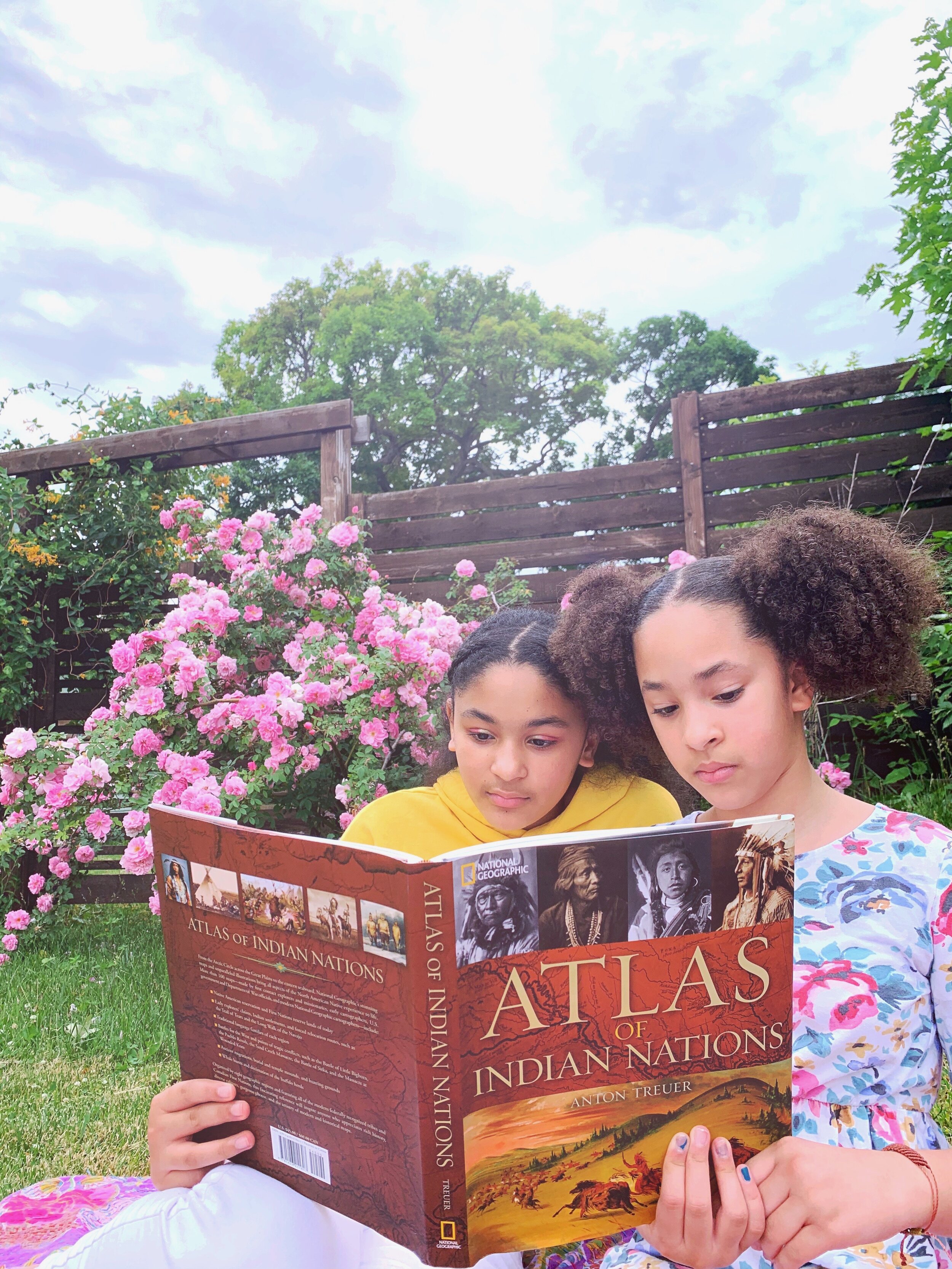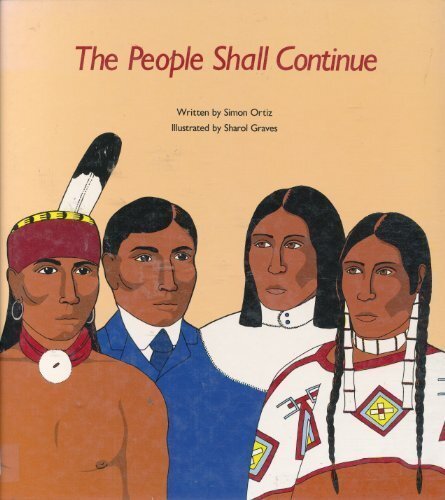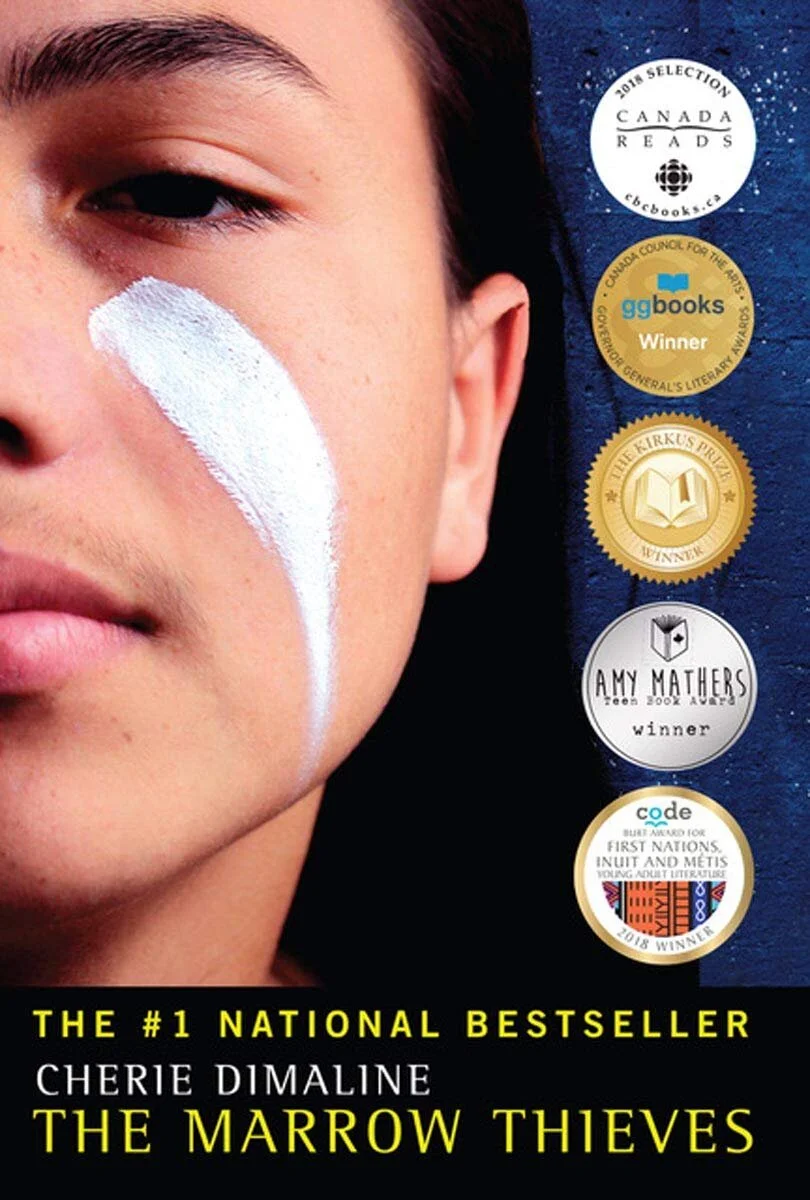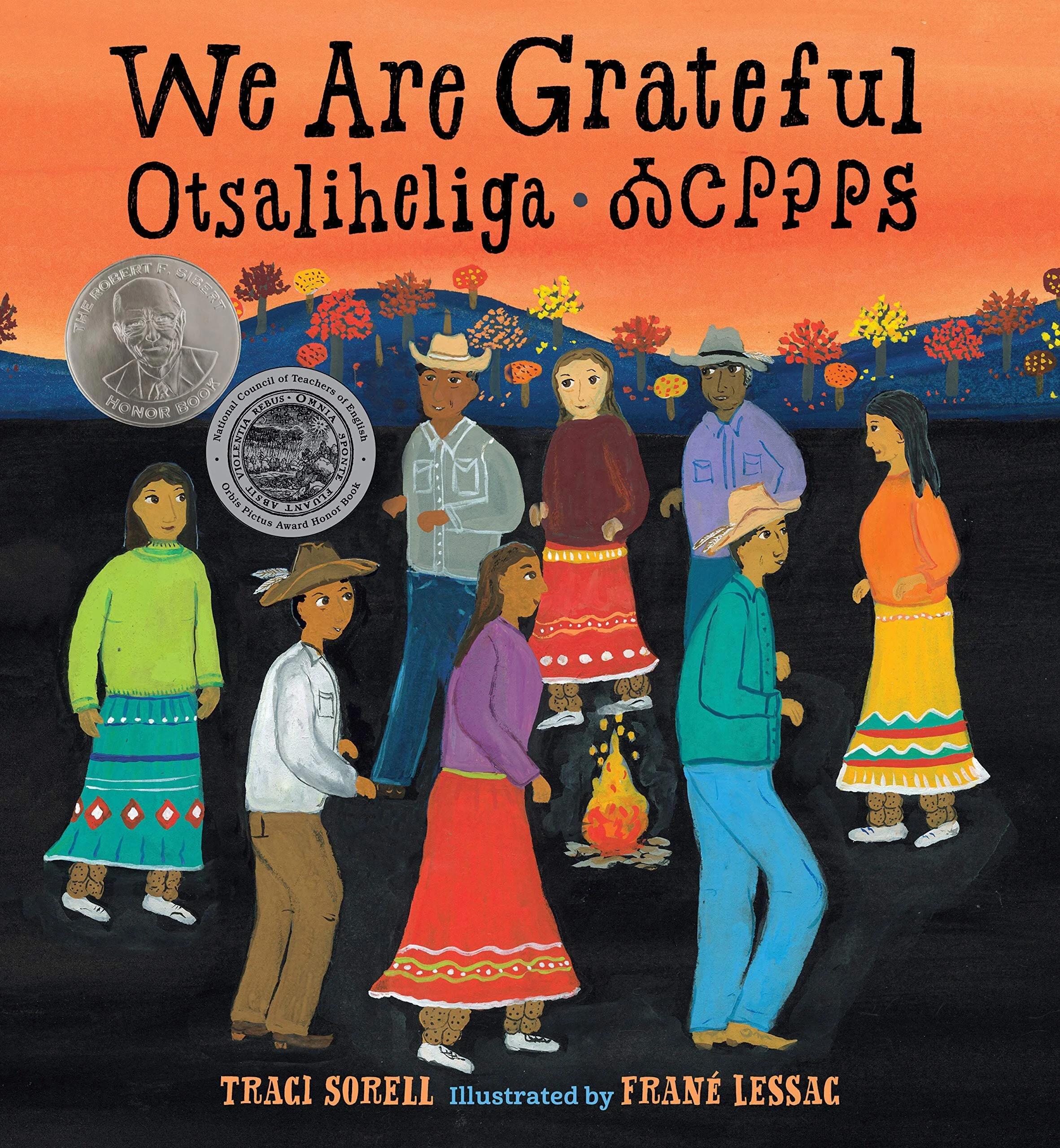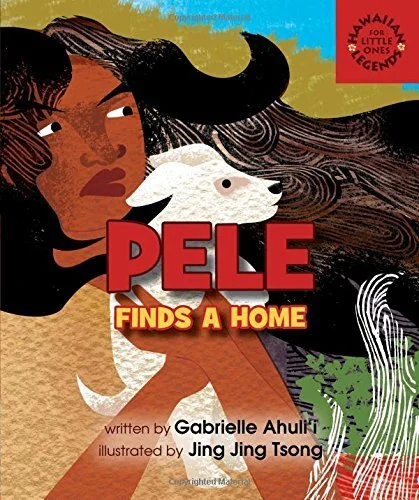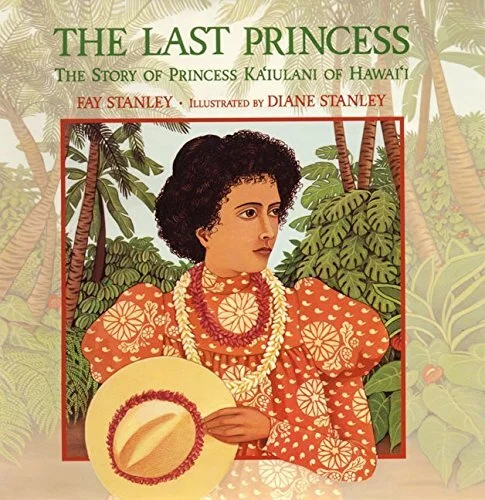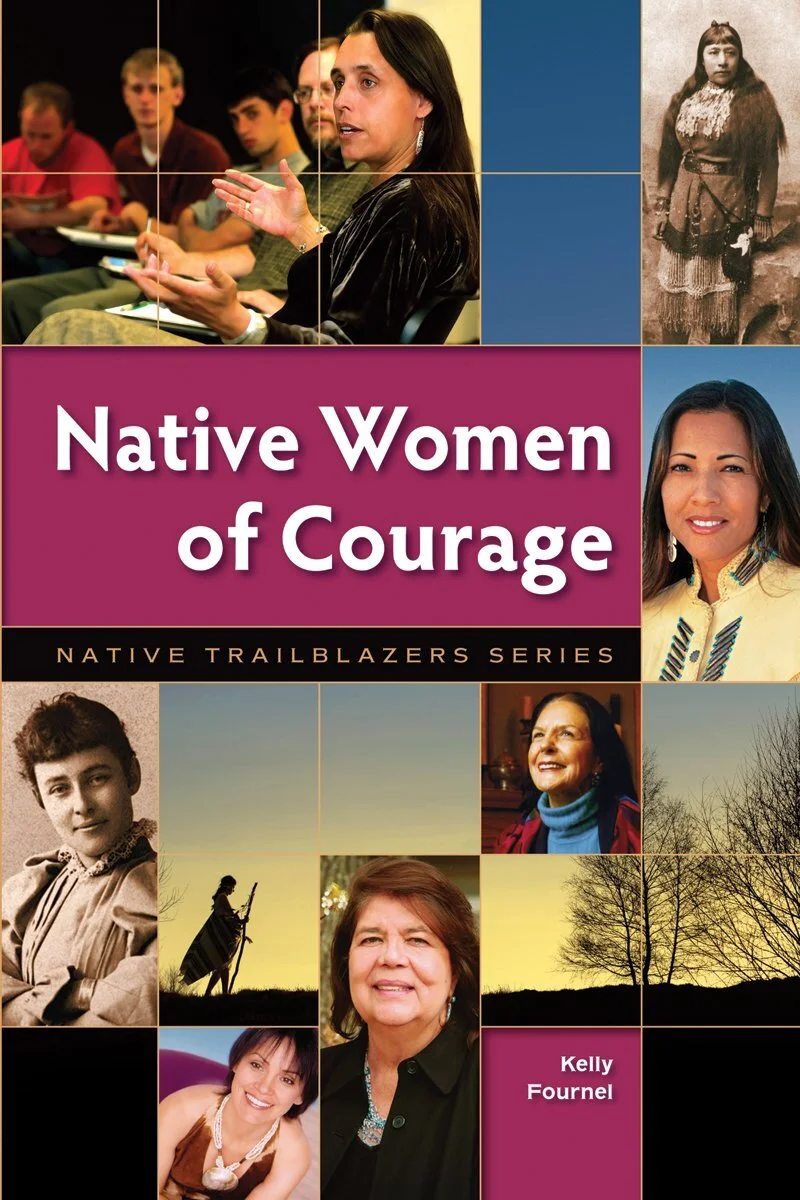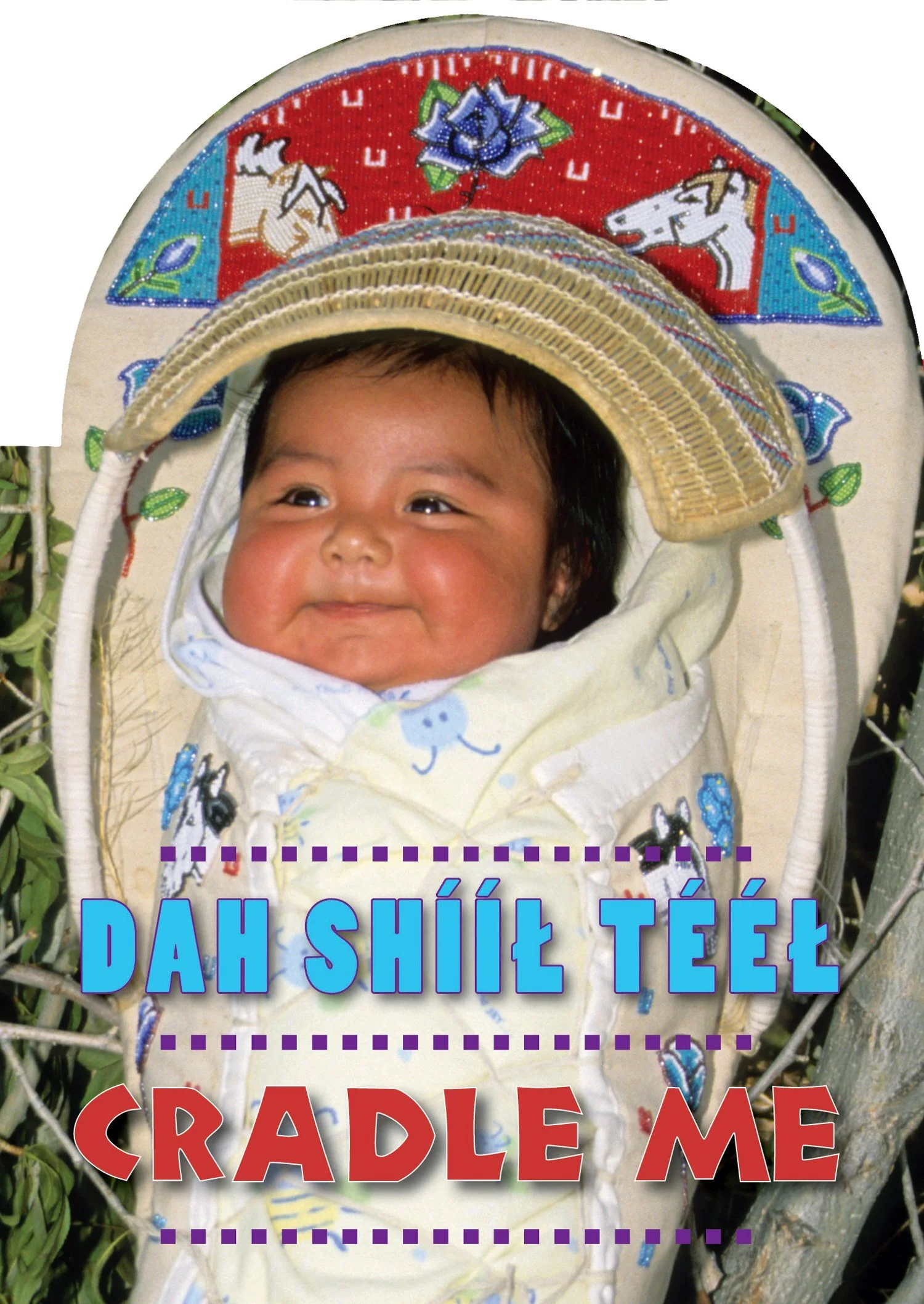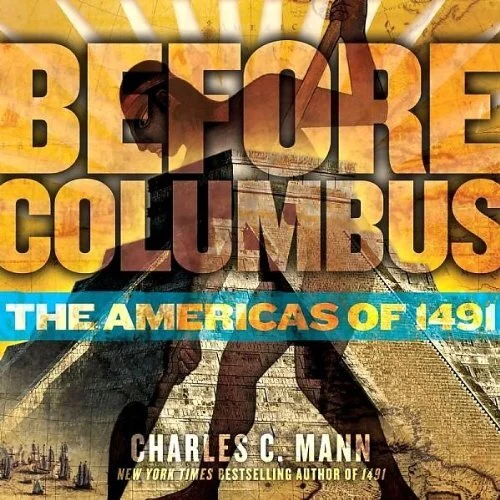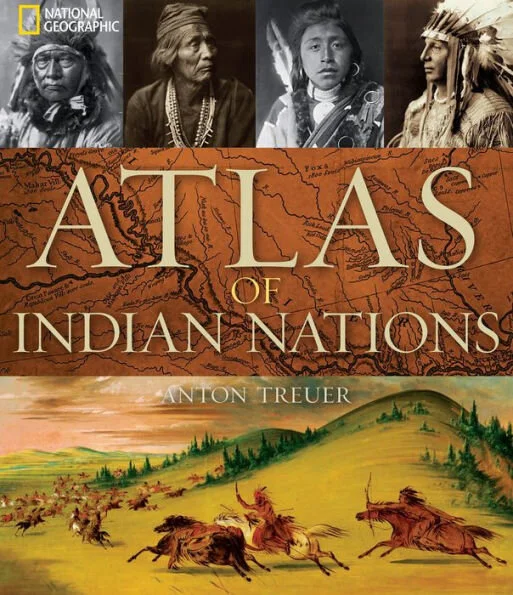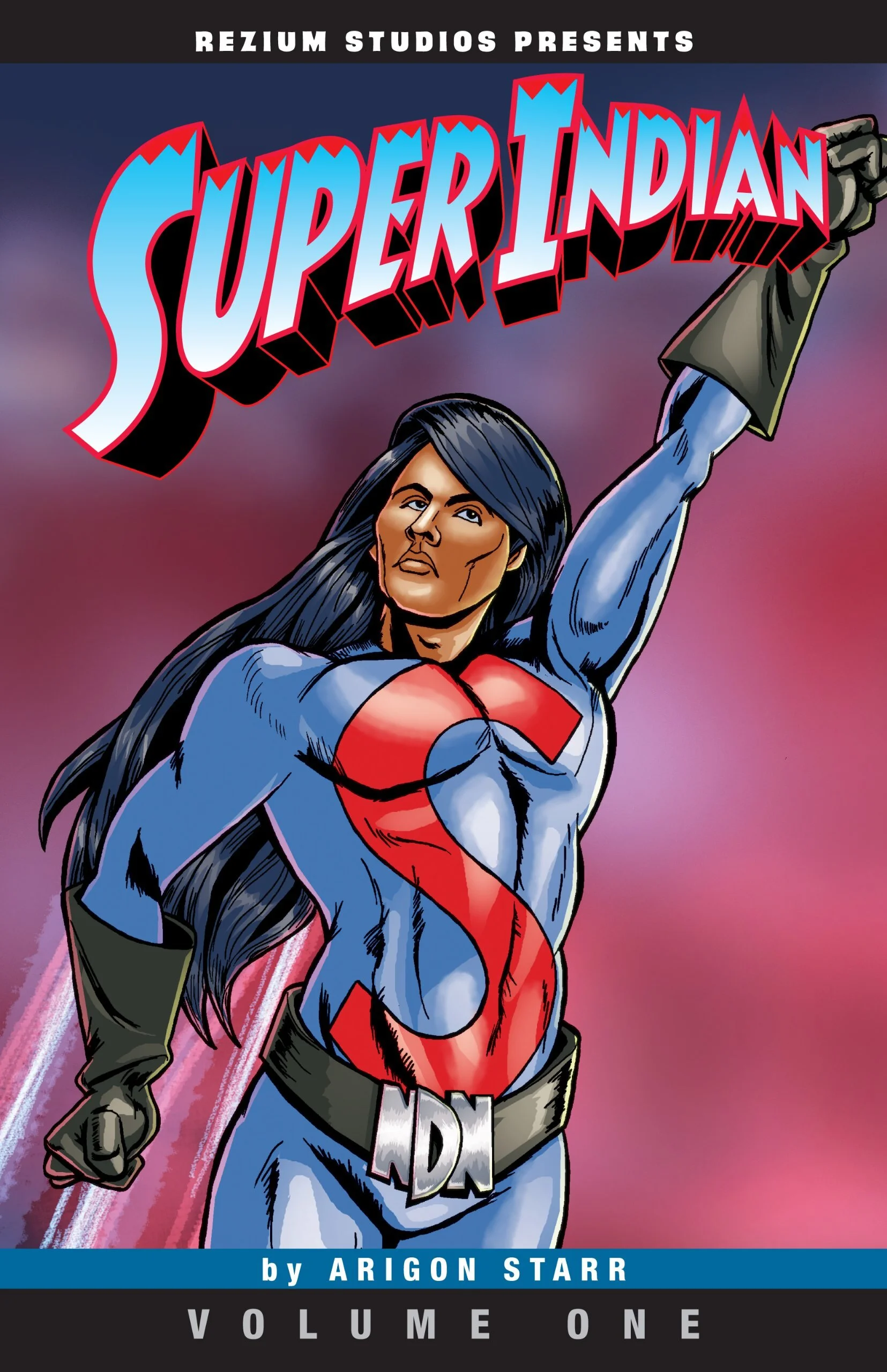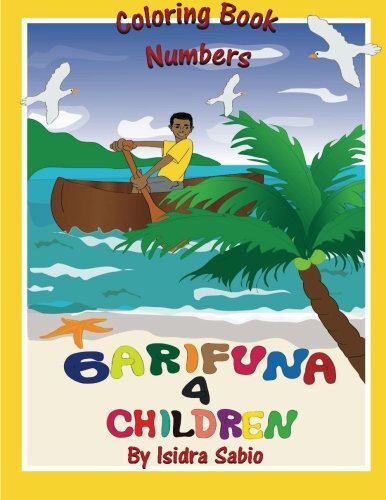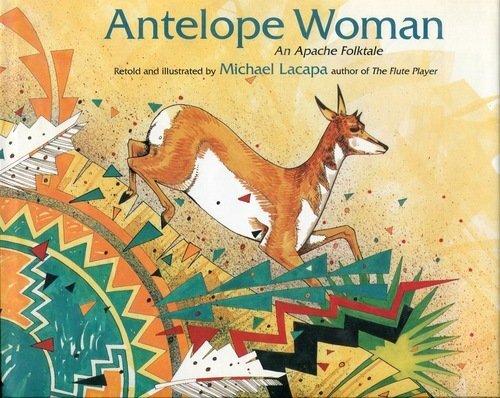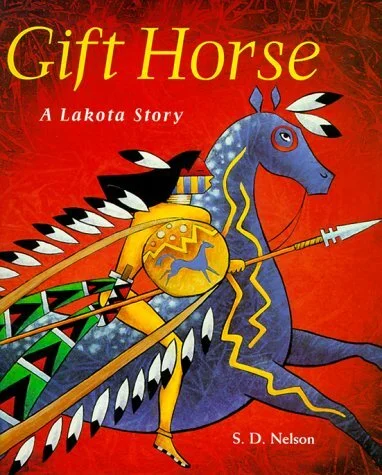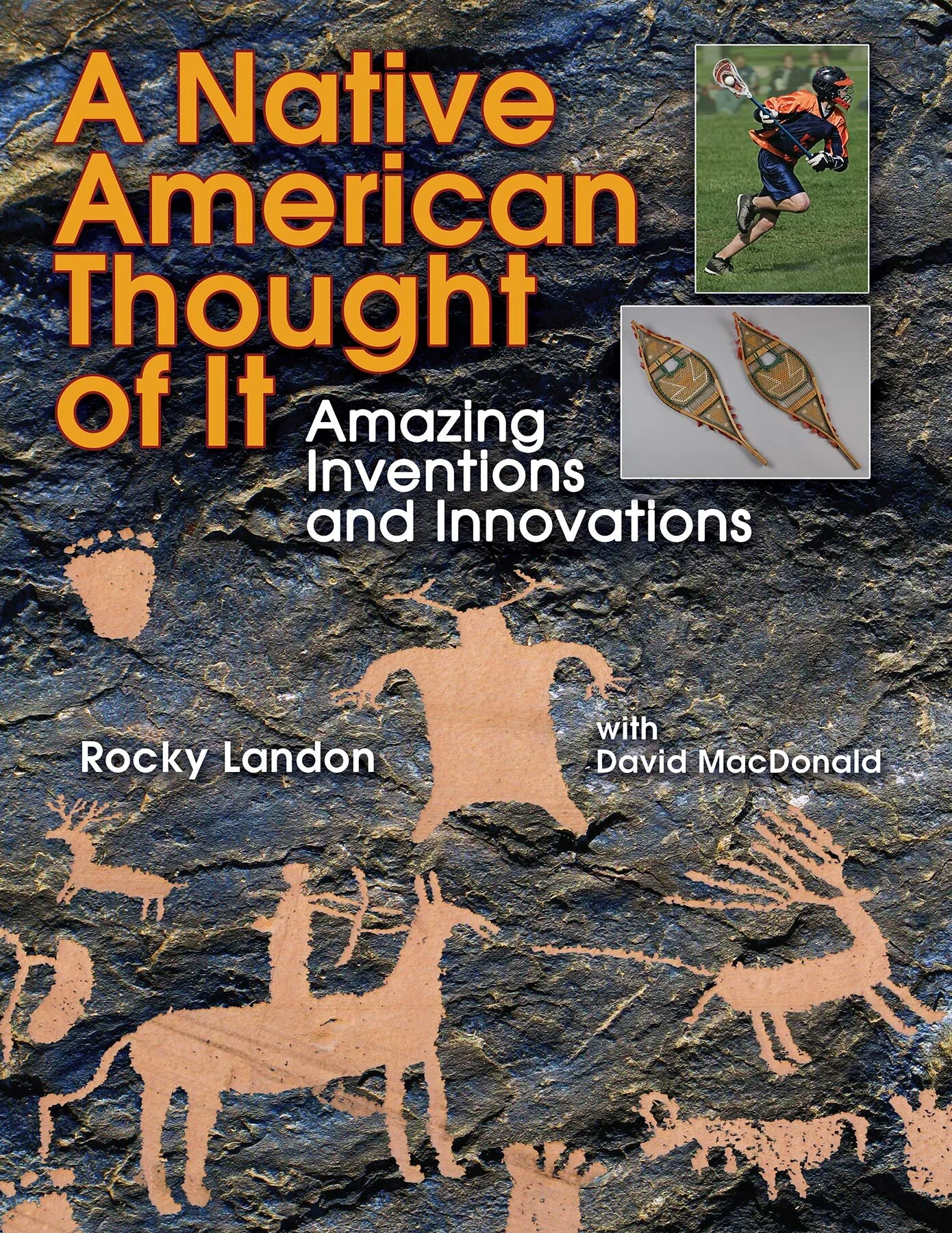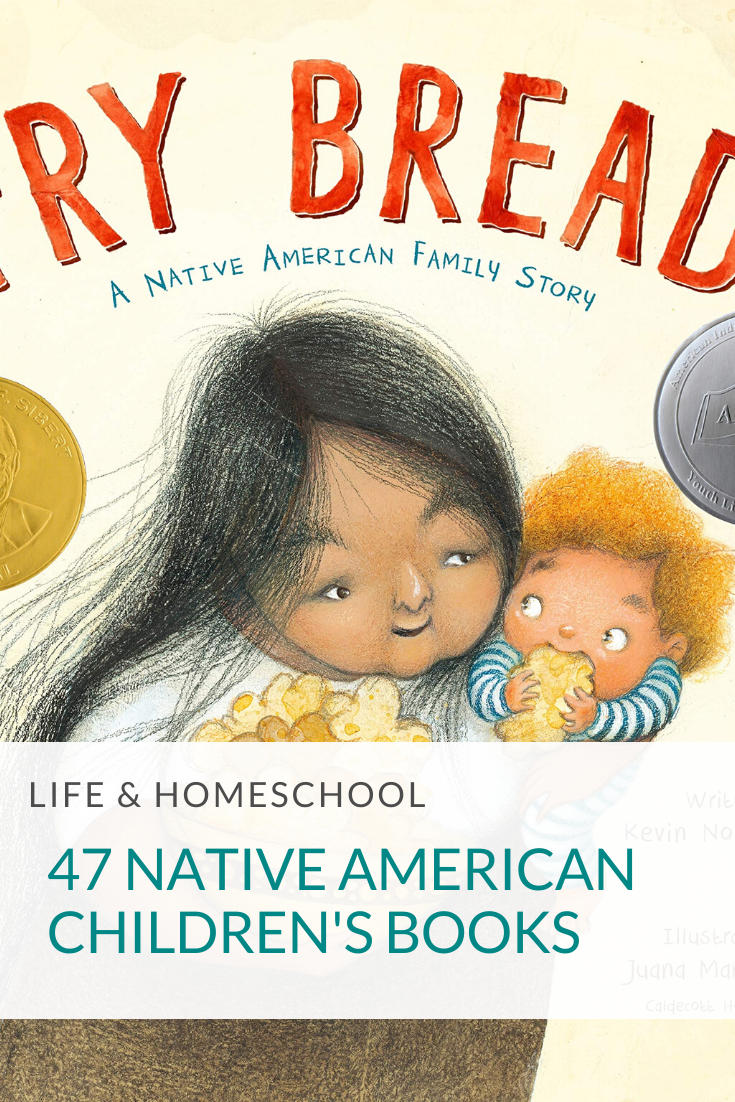47 amazing Native American Children’s books
Native American children’s books are excellent resources for teaching young ones about Indigenous people, beliefs and culture. Those of us who live in North and South America occupy Indigenous land, yet rarely do we amplify the stories of our original peoples.
The United States is all stolen land. From California and the Northwest to the Southwest, the Southern states, the Midwest, East Coast, Alaska and Hawaiʻi. All of this land belongs to the Indigenous nations who inhabited it before Europeans arrived.
Canada is stolen land. Every Canadian province from coast to coast was robbed from Indigenous people. The metropolis centers such as Montreal, Toronto and Vancouver are stolen land with real estate so expensive, most Indigenous peoples can’t afford to buy a home on the land that is rightfully theirs. Everyone’s favorite lakes to take the perfect Insta photos from while in Canada are all stolen from First Nations people.
México, South and Central America are stolen land. All those beaches we love to visit in Cancún, Cabo and Puerta Vallarta belong to the Indigenous people of México, as do the sites of all the yoga retreat centers in Tulum. Brazil, Guatemala, Perú, Nicaragua, Argentina, Costa Rica and every country within the region, all belong to the original peoples who inhabited them first— most of the Indigenous peoples living in these countries face extreme discrimination and abuses.
The Caribbean was once all Indigenous land. Before countless Europeans arrived in the Caribbean in search of gold and riches, all the islands were inhabited by Indigenous people. The Taíno, Carib, Arawak, Lucayan, Guanahatabey, Igneri, Macorix and many more. From Puerto Rico to Jamaica to Cuba, Haiti, The Bahamas and beyond, were once filled with original peoples who were mostly wiped out by European diseases and imperial conquests. Their populations were then replaced by millions of stolen Africans, brought to the region through chattel slavery.
And while so many of us live on stolen land, we know very little about the histories and current realities of Indigenous peoples.
understand whose land you’re on and practice land acknowledgment
Land acknowledgment is a statement that recognizes Indigenous peoples as the original and rightful caretakers of the lands we live on—it is a way to honor and respect their ancestral stewardship of the land. If one lives on stolen land, one should know the peoples whose land one is occupying.
Whose Land is a Canadian-based website that gives detailed information on First Nations land across the country and why land acknowledgment is vital. One can also find specific information on Indigenous nations in one’s own area. The site was able to give me information on the people whose land I live on in Minneapolis, Minnesota, and be sure to watch the videos and listen to Indigenous voices.
Native Land is a website that allows one to discover Indigenous land, nations, languages and treaties throughout North America, Central America, the Caribbean, South America, Australia, Hawaiʻi and New Zealand. There is also an app available for Apple and Andriod devices.
Download the U.S. Department of Arts and Culture’s guide to honoring Native land. Read their statement on why we should practice land acknowledgment and how to do it. Also available for download and print on the site are Indigenous artists-designed posters that allows one to write in the name of the nation whose land one occupies.
Learn about the land back movement
This is going to sound way too radical for many of you because it would entail true sacrifice on the part of individuals, but if you really wanna be ‘bout-it-'bout-it and down with the cause, learn about the Indigenous-led movement to have land returned to their nations and descendants. Yes, that may mean the return of sacred lands like the Black Hills and blowing the faces of George Washington, Thomas Jefferson, Teddy Roosevelt and Abraham Lincoln off of them…and the return and total control of the National Parks to Indigenous nations.
Learn about the theft of Native land in the United States.
Learn about the theft of Hawaiʻi from its people and its royal family.
Read this important information for non-Indigenous peoples of color who have been forced onto stolen land for varying reasons.
Read this article written by a First Nations youth movement in Canada about land return.
Learn about the new wave of Indigenous land theft in Latin America.
Learn about the Hawaiian national fight for land.
Learn about the Garifuna battle for land rights.
Learn about Indigenous Alaskan history and struggle for their land.
Learn about the Native Hawaiians fighting U.S. occupation.
Learn about Indigenous Brazilians defending the rainforest.
Learn about that punk-a** Mark Zuckerberg’s lawsuit against Native Hawaiians and about land grabbing in Hawaiʻi.
Learn about the sacred Native Hawaiian site, Mauna Kea, and the battle to protect it.
Learn about Abraham Lincoln ordering the largest mass execution in U.S. history in my homestate of Minnesota. Remember to honor those of the Dakota 38 who lost their lives and say their names outloud.
Learn about missing Indigenous women in Canada.
Learn about missing Indigenous women in the United States.
Watch this video from 2017 on murdered Indigenous environmental activists in Latin America. The number of violent deaths continue to increase.
Honor Indigenous People across the globe
The struggle of Indigenous peoples is not unique to the Americas and U.S.-occupied sovereign nations like Hawaiʻi. Across the globe, original peoples are fighting for the right to access their land, to keep their languages, customs, gastronomy, cultures and right to exist. From the Māori of New Zealand, the Sámi peoples of Europe, Indigenous Australians, Black Africans fighting for the land that was stolen from white farmers and beyond—the Indigenous struggle is global.
Study the fight for land return and rights of Indigenous peoples around the world.
Study the theft of African land across the continent by white farmers.
The Land Rights Now website is an excellent resource for learning about the global Indigenous struggle and fight for land.
The Australian Institute of Aboriginal and Torres Strait Islander Studies is packed with information on Indigenous Australians, maps of their land, books, land return fights and victories and so much more.
The sacred Black Hills were called Tȟuŋkášila Šákpe, or Six Grandfathers, before the faces of murderers were chiseled into them.
Wait, iliah, isn’t this blog post about Native American books for children and not about land rights?
Yeah, it is. But without first taking the time to discuss land rights, land acknowledgment and land return, it’s just another Native American book list that may make a few families feel like they’re doing “their part” in the name of diversity without pushing the conversation further towards restorative justice.
“True justice is not about giving the appearance of being anti-racist with empty, performative measures; true justice demands that wrongs be made right even at the cost of one’s own comfort.”
Okay, enough preaching, let’s talk about Native American books for children.
According to a 2018 study conducted by the University of Wisconsin-Madison, only 1 percent of children’s books depicted Indigenous characters. Let that sink in, folks, 1 percent. It is imperative for Black, Brown and Indigenous children to see themselves in literature, and Black, Brown and Indigenous children deserve to see themselves exist in stories beyond trauma-seeped histories. Black, Brown and Indigenous children deserve to see themselves as superheroes, princesses, mermaids and more. Our children need to see themselves in books flying kites, enjoying the swimming pool, solving mysteries and being, well, just kids. While researching for this article, I became even more aware of the lack of Native American books for kids and the lack of Indigenous characters in literature overall.
When was the last time you read a book to your child that had an Indigenous character and wasn’t culturally specific? Are you able to find children’s literature depicting Indigenous characters that aren’t culturally specific? When was the last time you read any Native American children’s books to your kids? How many Native American children’s books do you have in your home? Do you include Native American books for kids as a part of your “anti-racist starter kits” when teaching about equality?
And, for the record, these questions aren’t solely directed towards white folks.
Why i chose the Native american children’s books on this list
I have very specific reasons for choosing each book on this list, and one of my main objectives was to display a variety of Indigenous cultures. This was not an easy task as there are so many different nations across North and South America; finding a wide range of Native American books for children to represent this diversity was challenging. I was able to find stories on Plains nations of the Midwest, the Mayans and Inuit cultures, but it was difficult to find resources on other Indigenous peoples.
Indigenous people are not all the same; they are each their own unique nations with distinct languages, customs, dress, gastronomy, spiritual practices, artistic styles and histories. In Guatemala alone, there are 22 different Mayan languages—not dialects—spoken, and each village has its own traditional style of dress that is unique to them. This is very important to note when approaching studying any Indigenous culture: they are their own peoples and ethnic groups as distinct in many cases as a German from a Brit. Take time to become familiar with the Indigenous peoples from across the Americas, especially the ones that are lesser-known.
I also wanted to be sure to share modern Indigenous stories along with historical narratives. Indigenous peoples do not exist merely in tales from long ago, but they exist today and are intricate members of the culture of the Americas. And while I never shy away from the realities of hard and tragic histories, I also felt that it was most important to showcase thriving Indigenous peoples and stories as well. Growing up in Minneapolis, a city with a large Indigenous population, Native Americans were often reduced to negative stereotypes. While it is true that many Indigenous communities across North and South America face many difficulties and are marginalized on their own land, this not the complete story. Many Indigenous peoples are thriving despite the attempts of cultural genocide, diseases and current discrimination. Indigenous families love and honor each other and make positive impacts on their communities and on the world. Therefore, I sought to create a list of Native American books for kids, along with Hawaiian children’s books, that reflected these realities.
why are Hawaiian Children’s books included in this blog post?
Before the woke police issue a warrant for my arrest, let me explain. I recognize Hawaiʻi as its own individual country that was stolen and currently under U.S. occupation. Native Hawaiians are not “Native Americans” in the sense of being the original peoples of what is referred to as the “U.S. Mainland,” but since Hawaiʻi is internationally recognized as the fiftieth U.S. State, I wanted to honor their history and culture by including them in this post.
Hawaiʻi is located in Polynesia; no really, it is—go look on a map. And as all Indigenous peoples whose land has been stolen and whose people have survived attempts of cultural genocide, the Kanaka Maoli are fighting to keep their traditions alive. They are the original people of Hawaiʻi and all the Hawaiian islands belong to them. If you are a U.S. citizen, you should also remember to honor the Indigenous people of Hawaiʻi. Though I will write a separate blog post on Hawaiian kids books, I wanted to honor the Kanaka Maoli as the rightful and Indigenous peoples of Hawaiʻi.
buy Native American books for children from INDIGENOUS-owned bookstores
I understand it is not always possible to purchase books from independent bookstores, and I am not here to cast judgment on anyone. I don’t purchase all our reading materials from independent sellers though I understand its importance.
I did my best to provide books that can be purchased from an Indigenous-owned bookstore here in Minneapolis. Birchbark Books and Native Arts is owned by the literary legend, Louise Erdrich, who is an enrolled Turtle Mountain Band Chippewa. She is a renowned novelist of adult and youth literature that reaches deep into her Native heritage. She tells authentic stories from the perspective of her tribal nation, and gives space for other Native writers to be heard.
Birchbark sells more than just books and also carries jewelry, drums, quilts and other goods all handcrafted by Native artists. The store also supports Native gardeners and sustainable harvesting practices.
The store carries a large variety of Native American books for children and adults, and there is even a Native Hawaiian story in the collection—see, I’m not crazy! Just about all the books sold at Birchbark are written by Indigenous authors, so you will be sure to find children’s books by Native American authors. This is important! The store also provides a large selection of dictionaries and other materials to teach Indigenous languages. Birchbark also carries a large selection of Ojibwe children’s books and Lakota children’s books for those specifically interested in Plains Indigenous culture.
If you’re ever in Minneapolis, be sure to stop by the storefront and also browse their large online selection of books, DVDs, Cds, jewelry, crafts and more.
Other Indigenous-owned bookstores
Word Carrier Trading Post is a Native-owned bookstore in Rapid City, North Dakota that focuses on the literature of Northern Plains Tribes.
Black Bears and Blueberries is a Native-founded publishing non-profit based in Duluth, Minnesota that specializes in children’s literature. Their focus is on Native cultures of Minnesota, Wisconsin, Michigan and the Dakotas.
Strong Nations is a First Nations-owned bookstore in British Colombia, Canada. The store has a wide-rage of First Nations literature from varying parts of the country. There are also First Nations books in French for French speakers.
GoodMinds is a superstore of First Nations, Native American, Aboriginal and Indigenous books. With over 3,000 titles, you are sure to find amazing literature in this First Nations-owned store based in Southwestern Ontario on the Six Nations of the Grand River.
Red Planet is a Native-owned comic and book store in Albuquerque, New Mexico. Owned by a member of the Laguna Pueblo, it is the only Native-owned comic book shop in the world. Filled with Indigenous Futurism and amazing books, it’s the go-to place for Native comics.
Raven Reads is a Canadian-based subscription box of First Nations adult and children’s books.
Native Northwest is based in Canada and also ships to the United States. The store carries a large variety of First Nations books, arts and crafts.
Beachhouse Publishing is a Hawaiʻi-based publishing company that carries a collection of Hawaiian kids books. Most titles are in English, but there are some that are bilingual and written with Native Hawaiian. I cannot guarantee this company is Kanaka Maoli-owned, but it produces beautiful Indigenous books of deities and other aspects of modern Hawaiian culture.
Kids Books Bolivia is not Indigenous-owned but is a non-profit that creates unique children’s books about Indigenous culture in Bolivia. All books are bilingual Spanish and English, and some are even trilingual with Spanish, English and varying Andean-Indigenous languages. The collection rages from stories on Bolivian culture and identity, social justice, the enviornment and biodiversity—there’s even an Afro-Bolivian story.
Many of these stores allow you to purchase Native American children’s books online, so you don’t need be in these cities to support Indigenous-owned bookstores.
Visit your public library
If buying a collection of Native American books for children is not within your budget, be sure to check out the local library. Your public library card is a passport to diverse cultures and gives one access to a plethora of literature.
read the aicl blog
AICL stands for “American Indians in Children’s Literature” and is an incredible resource on proper ways to represent Indigenous people in children’s books. I would highly recommend using this blog as your go-to guide on culturally appropriate and culturally honoring Native American literature. The blog also includes reviews of Native American children’s books, information on microaggressions against Indigenous people and how to properly refer to the first peoples of the U.S. and Canada. The site also gives in-depth explanations of tribal nations.
Children’s books for Native American Heritage Month
November is Native American Heritage Month in the United States. Instead celebrating Thanksgiving and colonial atrocities, honor Native American culture by reading Native American literature with your family. I originally began writing this post for 2019’s Native American Heritage Month but wasn’t able to publish it then, but Indigenous peoples should be honored everyday and not just for a few days out of one month of the year.
47 amazing Native American Books for kids to share with your family:
1. Mama, Do You Love Me?
Mama, Do You Love Me? is a beautiful Native American book for toddlers filled with stunning drawings. This classic tale of a mother’s deep and unconditional love for her child, is the center of this story set in the arctic and it is sure to warm hearts. Filled with beautiful illustrations of Inuit life and traditions, it is sure to be a family favorite while opening up the opportunity to dig into arctic Indigenous culture. The girls and I read this book over and over again when they were little bitties, and it inspired a phrase I tell them to this day: “there’s nothing that you could ever do to make me not love you.”
To purchase: Abe Books, from $3.42
2. the people shall continue
The People Shall Continue is a powerful book of the Indigenous history of North America. Written in the traditions of oral history storytelling, the book tells stories that began at Creation until the invasion of Native nations. Also detailed is the bravery and resistance of Indigenous nations in the quest to fight off the invaders of their lands.
To purchase: Birchbark Books, $9.95 Spanish version: LeeandLow, $10.95
3. Surfer of the Century: The Life of Duke Kahanamoku
Most people associate surfing with blond white guys from California, when in actuality surfing is based on an ancient Hawaiian spiritual pratice. Duke Kahanamoku was a Native Hawaiian who is credited as the creator of the modern surfboard, and he is hailed the father of modern surfing. Duke was also a five-time Olympic swimming champion and legendary sports hero.
Watch this video on the history of surfing.
To purchase: LeeandLow, starting at $12.95
4. The Marrow Thieves
The Marrow Thieves is a futuristic young adult novel that won various youth literature awards in Canada. After the world’s population loses its ability to dream due to global warming, society is driven into chaos. The only Indigenous people are able to dream, and they come under threat as their marrow holds the cure to dreamlessness. A brave fifteen-year-old and his friends fight against “marrow hunters” who hunt down their people and seek to take their lives to steal the precious powers they possess.
Learn about Indigenous Furturism.
To purchase: Birchbark Books, $14.95
5. Coloring book of the Incas, Aztecs and Mayas
The Incas, Aztecs and Mayas are amongst the most well known Indigenous peoples in the Americas. Their histories are rich and sophisticated, filled with advanced writing systems, geometry, pyramids and other engineering masterpieces. Long before Karl Marx penned his revolutionary ideas, the Incas lived in what is believed to be a socialist utopia where the community contributed collectively.
This coloring book on pre-Columbian peoples of the Americas is a great way to engage a child’s creativity while simultaneously learning mighty history.
Watch this video on pre-Columbian cultures in the Americas.
To purchase: Abe Books, from $3.77
6. We Are Grateful: Otsaliheliga
Expressing gratitude is such an important spiritual practice, and it’s never too early to teach these principles to children. Gratitude for kids is not a new phenomenon nor a marketing scheme, but many Native cultures have passed these fundamental values down for generations. We Are Grateful is a Cherokee story of expressing gratitude in every season life brings. Sometimes it’s hard to know what to be thankful for, this beautiful story will give your children many reasons to be grateful.
Learn how to say “grateful” in Cherokee.
To purchase: Birchbark Books, $17.99
7. Pele finds a home
In Hawaiian spiritual beliefs, Pele is the creator of the Hawaiian islands and the goddess of fire and volcanoes. Pele is a fiery woman on a search to find the perfect home; when her temper rages, she consumes everything in her path. This beautiful Hawaiian children’s book takes you and your children on the journey to see how many Native Hawaiians believe their islands were created.
Watch this short animated film on Pele searching for a home.
To purchase: Beachhouse Books, $7.95
8. butterfly dance
Sihumana is a young Hopi girl of the Southwest preparing for her first Butterfly Dance. The dance is performed every summer to bring rain to the drylands. Butterfly Dance is a story of family, traditions and includes a glossary of Hopi words and photos of Hopi life.
Watch this Hopi mother teach the significance of hairsytles for Hopi girls and women throughout their lives.
Watch a Butterfly Dance.
To purchase: Abe Books, $4.18
9. garifuna abc
The Garifunas are Afro-Indigenous peoples in the Caribbean and Central America. Descendants of Caribs, Arawaks and Africans brought to the Americas, Garifunas have their own distinct culture and a language that is heavily influenced by Arawak. Garifunas originated in the islands that are now known as St. Vincent and Dominica, they were deported by the British to Honduras and then spread into Guatemala, Nicaragua and Belize. The language is 45% Arawak, 25% Carib, 15% French, 10% English and 5% Spanish—there are also words from varying West African languages. The Garifuna have preserved Caribbean Indigenous language in an incredible manner. This Garifuna alphabet book is a perfect way to teach children the basics of this very important language.
To purchase: Abe Books, $9.41
10. Go show the world: A celebration of Indigenous heroes
Based on a rap song written by First Nations politician and activist, Wab Kinew, Go Show the World celebrates Indigenous heroes from “Canada” and the “U.S.” throughout history. From legends such as Crazy Horse and a NHL goalie, this book is filled with amazing Indigenous men and women your children should know.
Look for Indigenous rappers on Youtube.
Listen to this song from First Nations group, A Tribe Called Red, and Rosebud Sioux rapper, Prolific.
To purchase: Birchbark Books, $17.99
11. The Birchbark House
Written by the acclaimed Native American author, Louise Erdrich, The Birchbark House is the beautiful fictional story of a young Ojibwe girl. Set in 1847 on an island in present-day Lake Superior, the story centers around a young girl, Omakayas, and her family as they live every day in their traditions and deal with the presence of white settlers drawing near their home. A beautiful story filled with detailed depictions of Ojibwe life, culture and spoken language. If you’re looking for Native American books for middle school students, The Birchbark House is a first in a series and is perfect for young readers.
To purchase: Birchbark Books, $6.99
12. Abuela’s Weave
Abuela’s Weave is the tale of a grandmother and granddaughter and the importance of perseverance and the passing down of traditions. Set in Guatemala, Esperanza’s grandmother has passed down the tradition of Mayan weaving that has been taught to young girls for many generations. Esperanza is a skilled weaver and ready to sell her creations at the market, but she feels intimidated to do it alone. Filled with beautiful illustrations, this book opens up the beautiful world of Mayan culture to children. My girls were able to learn weaving techniques and traditions on a recent trip to Guatemala, and it was beautiful to watch them learn from women in their homes who had learned the same skills from their grandmothers.
Watch this short video on Guatemalan weaving.
To purchase: LeeandLow, $10.95 (Spanish version also available)
13. dragonfly kites
Dragonfly Kites is a bilingual story written in Cree and English. It tells the story of two brothers and their family summers spent on a lake in northern Manitoba and the power of imagination. Joe and Cody spend hours outdoors flying kites and use their imagination to soar through the sky with dragonflies.
Make paper dragonflies.
To purchase: Birchbark Book, $14.95
14. THE LAST PRINCESs: the story of princess kaʻiulani of hawaiʻi
Before Hawaiʻi was stolen by the United States, its people were ruled by a royal family. Princess Kaʻiulani had prepared for years to become the queen of her people, and that day would never come as her kingdom was robbed from her through imperial acts of violence. Learn the story of the last princess in this Hawaiian kids book that’s filled with gorgeous drawings and Hawaiian words.
Watch this Princess Kaʻiulani movie trailer.
Watch this documentary on how Hawaiʻi was stolen from its people and royal family.
To purchase: Abe Books, from $4.35
15. wild ricing coloring and activity book
Planting and gathering wild rice has been essential to Ojibwe communities for centuries, and it is even used as ceremonial offerings. The Wild Rice Coloring and Activity Book is filled with coloring pages, word scrambles, crossword puzzles and mazes all relating to wild rice. The book also introduces children to the tools used for planting, sowing and harvesting process.
Watch this video on wild ricing.
Listen to renowned activist, Winona LaDuke, speak on the Indigenous connection to food.
To purchase: Birchbark Books, $5.99
16. The Sharing Circle: Stories about First Nations Culture
First Nations people are the original inhabitants of the land that is currently called Canada. The Sharing Circle contains seven Mi'kmaq First Nations stories about culture and religious beliefs. Shared in such a beautiful and detailed manner, your children will gain deep insight into First Nations heritage.
Listen to this elder speak on dream catchers and consider respecting sacred items by not using them unless culturally invited to do so.
To purchase: Birchbark Books, $12.95
17. The Golden Flower
Long before Europeans arrived to islands now known as Puerto Rico, The Bahamas, Cuba, Jamaica, Haiti and the Dominican Republic, they were inhabited by an Indigenous people, the Taínos. The Taínos of Puerto Rico called their island Borikén, which is why many Puerto Ricans refer to themselves as “Boricuas”. The Golden Flower is a Taíno creation myth that tells how the Taínos believed their home, Borikén, was formed. This book is a classic in our home as my children are half Puerto Rican on their papi’s side. With stunning illustrations and magical folklore, this is sure to be loved in your home as well.
Read about the Taíno rebellion against the Spanish in Borikén.
Make golden flower necklaces. When my girls were still in school, I read this book to their classes and did a simple craft project to accompany it. You only need a few materials: a flower coloring page, glue, scissors, gold glitter, a hole puncher and yarn. Color the flower, cut it out, punch a hole on top, spread a small amount of glue on the flower, sprinkle on the gold glitter and let it dry. Once the glue is dry and glitter secure, add the yarn and tie a knot. Voilà! You have a golden flower necklace and an interactive way to reinforce learning for your children.
To purchase: Abe Books, from $4.39 (Spanish version also available)
18. Native American women of COURAGE
From activists like Winona LaDuke and Wilma Pearl Mankiller, who was the first woman chief of the Cherokee Nation, Native American Women of Courage is filled with powerful Native and First Nations women. Use this powerful resource to shape the narrative of Indigenous women in the hearts of your children.
Watch this short video on Native American warrior women.
To purchase: Birchbark Books, $9.95
19. Cradle me
Cradle Me is a lovely book showcasing the Native American tradition of carrying babies on cradleboards. Used by varying Indigenous nations, each cradleboard is customized with its own look. This Native American picture book is written in Navajo and English.
Watch and learn about cradleboards.
Listen to an elder teach about Diné cradleboards.
Listen to this elder explain “Diné” and its meaning.
To purchase: Birchhouse Books, $6.99
20. before columbus: the americas of 1491
Before Columbus is a beautifully illustrated book on life in what is now known as the “Americas” before the arrival of Christopher Columbus. So much about pre-Columbian society is rarely, if ever, taught in school, and this book opens children up to the sophisticated world of Indigenous societies. Your children will learn about the Aztec capital that had a complex system of running water, how Indigenous peoples in present-day México created corn from their own specially designed engineering process and that pyramids were found in Perú that predate those in Egypt. We used this book as part of our homeschool history resouces and it’s a life-changing read.
Watch this video on the sanctity of corn in pre-Columbian cultures.
Learn how Mexican-grown corn is threatened by GMOs and globalization.
To purchase: Birchbark Books, $24.99
21. Fishing with Grandma
Fishing with Grandma is an adorable story of an Inuit grandmother who’s preparing for an ice fishing trip with her grandchildren and teaching them to ropes! Grandma shows them to make a traditional fishing rod, drill for holes and what clothes to wear to keep them warm while out on the ice.
Watch this video on ice fishing.
To purchase: Birchbark Books, $10.95
22. Naupaka
A beautiful story rich in poetic flow, Naupaka tells of why Hawaiʻi’s native plant of the same name only blooms into half of a flower. Filled with breathtaking illustrations of characters with jet-black hair, rich dark-brown skin and vibrant colors like a classic painting, this Hawaiian children’s book is a must for your home.
Watch and learn about plants and flowers that are only found in Hawaii.
Watch and learn about Hawaiian biodiversity.
To purchase: Beachhouse Publishing, $7.95
23. Rez Dog
Many people are unaware that dogs played central roles in many Indigenous societies across what is now known as North America. Dogs were sacred animals that held dual connections. They were seen as almost human yet their bond to the wild was understood, and they were spiritually linked to animals such as bears, foxes and coyotes. Dogs were integral members of many Indigenous communities as they aided in hunting food, carried belongings and were even trusted as caretakers for children and the elderly while the women gathered food.
The term “Rez Dog” is synonymous with stray dogs that wander freely around reservations, but the phrase has also become an emblem of reservation life and its residences.
The book Rez Dog emphasizes the importance of being kind to animals and follows the journey of a dog as he finds a loving home and a name.
Learn about pre-European contact dogs in the Americas.
To purchase: Birchbark Books, $10.00
24. Crossing Bok Chitto: Choktaw Tale of Friendship & Freedom
Rarely told are the stories of Native American and African American interactions during the time of slavery and the intersection of these lives. In Crossing Bak Chitto, a young Choctaw girl, Martha, becomes friends with a boy, Little Mo, who is bound by slavery. As their friendship grows, she soon learns that his mother will be sold away and their family torn apart. With the aid of Choctaw women, Martha leads Little Mo and his family across the river to Choctaw land and freedom.
Watch this video and learn about the Choctaw.
To purchase: Birchbark Books, $8.95
25. Atlas of indian nations
Written by Ojibwe professor, Anton Treuer, Atlas of Indian Nations is a complete atlas of every Indigenous tribe in what is now called the United States. From California to New York to Florida and every state in between is Native land and was inhabited by Indigenous nations each with their own language, customs, dance, food and cultures. These nations had sophisticated communities, agricultural and trading systems. Included in the book are full maps of Indigenous nations and their lands covering the entire country state-by-state. The book details each nation and their customs and the photos are of high quality, rivaling classic Native American picture books. It is an excellent resource for adults and children alike, and should be in every home in the United States.
To purchase: Abe Books, starting at $7.50
26. Super indian volumes I & II
Hubert Logan eats tainted government cheese on his reservation and develops extraordinary powers; he goes from being a regular boy on the Rez to a superhero with superhuman strength. With his newfound puissance, Hubert and his friends fight off evil and protect their reservation.
Listen to Indigenous comic book store owner, Lee Francis, speak on the importance of Indigenous representation in comics and graphic novels.
To purchase: Birchbark Books, $22.95 each
27. we are the children of the island of the sun
Evo Morales made history by becoming the first-ever Indigenous president in Latin America. During his presidency, the economy boomed and the quality of life for Bolivia’s Indigenous people improved. Not only did their economic positions change, but Bolivia became a plural national state that gave equal status to Indigenous peoples. We are the Children of the Island of the Sun is a trilingual book (Aymara, Spanish and English) that gives children a glimpse of Indigenous Andean beliefs and their relationship with the earth. Evident is the deep connection the Aymara have with the sacred mountains around them and even with the food they harvest.
Watch this short documentary on the movement to keep Aymara culture and language alive in Bolivia.
Watch this video on the rise of an Aymara upperclass.
To purchase: Kids Books Bolivia, prices vary
28. food of the americas: native recipes and traditions
Food is such an essential component of any culture, and it is especially important in Indigenous communities as their gastronomy was often the victim of colonial attacks. Thousands of years ago in Mesoamerica, Indigenous peoples pioneered sustainable agricultural practices that have allowed crops to be planted in the same soil for thousands of years without erosion. They are also responsible for one of the first sophisticated genetic engineering processes when they created maize or corn.
Foods of the Americas is a collection of Indigenous recipes and traditions from the Americas, keeping cultural traditions alive. To hold on to ancestral gastronomy is a revolutionary act of resistance.
Watch this short video on Native American foods in the United States.
Watch this video on Indigenous cuisine.
Listen to an Indigenous elder teach on importance of corn.
Watch this Indigenous chef cook for his community.
To purchase: Birchbark Books, $28.00
Further reading: 12 Ways To Use Food To Give Your Children Global Experiences At Home
29. garifuna numbers coloring book
This coloring book introduces children to the Garifuna language through numbers 1-10. An easy and fun way to keep Indigenous languages alive!
Watch this video on Garifunas discussing losing their language.
Learn to count to ten in Garifuna.
To purchase: Abe Books, $7.52
30. antelope woman, an apache folktale
In many Indigenous cultures of North America, animals and their connection with humans play intricate roles in spirituality and everyday life. In Antelope Woman, a young and beautiful woman sets off on a journey by following a mysterious stranger, who turns out to be an antelope disguised as a human. The antelope-man teaches the beautiful woman an important life lesson: to respect all things, both great and small.
To purchase: Abe Books, from $14.55
31. fly high! the story of bessie coleman
Bessie Coleman was the first Native American woman to receive a pilot’s license. Most famously known as the first African-American woman pilot, Bessie was also half Native American whose father was Cherokee. She is a heroine not only for Black America, but she is also a Native American icon.
To purchase: Abe Books, starting at $4.34
32. i am not a number- Gaawin Gindaaswin Ndaawsii
O, Canada. You have the international reputation of being nice, welcoming, open and liberal. And while you, and the rest of the world, love to boast in these attributes, rarely discussed is the dark history of abuses of your First Nations people. Written in both Nishnaabemwin Nbisiing Ojibwe and English, I Am Not A Number is the story of an eight-year-old girl taken from her family and forced to attend a Canadian residential school. Forced to learn a language that is not hers, a faith that is not hers and a culture that she doesn’t belong to, Irene, struggles to retain a sense of her own identity. Based on the true story author’s grandmother, this is a history that should never be erased.
To purchase: Birchbark Books, $14.95
33. the magic bean tree: a LEGEND from argentina
Though rarely ever seen in mainstream media, Argentina is home to varying Indigenous nations. Currently representing 3-5 percent of the national population, there are nearly thirty distinct Indigenous nations within the country. In the area of the Pampas, the Querandí once lived in harmony with nature and respected the will of Pachamama.
The Magic Bean Tree tells the story of a magic tree that grew in the middle of the vast pampas of what is now known as Argentina. Near the tree lived a brave young boy willing to face the evil bird that lived above the tree, who possessed the power to stop the rain from falling. The brave boy decides to set out on a journey to save his village, and the animals around it, from dying of thirst.
Watch and learn about Indigenous land struggles in Argentina.
Learn about Mapuches of Argentina fighting for their land.
To purchase: Abe Books, starting at $5.72
34. cacy & Kiara and the curse of the Kiʻi
Cacy and Kiara are two 6th grade cousins in Hawaiʻi. The two end up on the adventure of a lifetime when on a school field trip to a volcano, they have to call on their family deities and the goddesses Hiʻiaka and Pele to help save the day!
Watch this video of Damian Marley joining protestors at Protect Mauna Kea protests.
Watch this trailer for the Netflix orginal movie, Finding ‘Ohana.
To purchase: Beachhouse Books, $11.95
35. who was maria tallchief?
Maria Tallchief was a member of the Osage Nation, and according to their traditions, women were not allowed to dance. Maria’s family recognized her talents and allowed her to pursue her dream, and she went on to train with some of the most accomplished ballet masters in the world. Maria traveled the globe as an accomplished ballet dancer and is the United State’s first-ever prima ballerina.
Watch this short video on Maria Tallchief and four other world-renowned Native American ballerinas.
Read about the “Five Moons” dance festival honoring Native American ballerinas.
Learn about the Five Moons monument in Tulsa, Oklahoma that honors the five famous Native American ballerinas.
Watch this short video on Than Povi, a young Pueblo ballerina from New México.
To purchase: Abe Books, starting at $3.98
36. Cuauhtémoc: Shapes - Formas
Written in both Spanish and English, Cuauhtémoc is a book that introduces babies and toddlers to shapes in both languages. Set in the Aztec city of Tenochtitlan, this book will take you on a great adventure with the last Aztec emperor, Cuauhtémoc. If you are looking for Native American books for preschoolers to add to your family’s collection, Cuauhtémoc is a perfect choice.
Watch this short video on the Aztec city of Tenochtitlan.
To purchase: Abe Books, $8.46
37. Pacific Northwest Art: COloring pages for kids
Indigenous peoples of the Pacific Northwest of what is now known as Canada and the United States, are known for their beautiful art and sculptures. Their artistic style is unique and instantly recognizable, and often honors the animals with whom they share the land and waters with such as whales, ravens and bears. This beautiful coloring book opens your child to the sacred art of this region.
Listen to these First Nations elders teach on the power of Totem Poles.
Read about the cultural appropriation of Pacific Northwest Indigenous art and images in the United States.
To purchase: Abe Books, $7.05
38.first laugh:welcome baby!
First Laugh, is a Native American family story of love and traditions. In Diné culture, a First Laugh Ceremony is held when a new baby is born; each family member competes to be the one to make the baby laugh for the very first time. This beautiful story of Navajo family life is also filled with Navajo words.
Listen to this Diné elder explain the significance of the First Laugh ceremony.
To purchase: Birchbark Books, $16.99
39. young water protectors
Indigenous youth have spent years on the frontlines of environmental activism, with most of the efforts going unknown in the global media. Encourage your children to stand up for environmental rights and to protect Earth’s resources by reading the story of these two young water protectors. Young Water Protectors is based on the true story of an eight-year-old water protector who joined the fight at Standing Rock.
Watch this short video of a young, Indigenous environmental activist. Note that it’s from four years ago, before the media gave attention to white, teenage activists.
To purchase: Birchbark Books, $13.99
40. Gift Horse: A Lakota Story
In the Gift Horse, Flying Cloud is given a horse by his father as he begins his tradition into cultural manhood, which leads into a heroic rescue. This beautiful coming of age Lakota story gives great insight into life on the Great Plains in the early 19th century.
Learn about the theft of the Black Hills and aslo read this article.
Watch this short film on modern Lakota youth on the Cheyenne River Reservation in South Dakota. Despite poverty and historical traumas, the elders and youth are fighting to keep their traditions alive and to thrive in spite of hardships.
To purchase: Birchbark Books, $18.95
41. Compañeras: Zapatisita Women’s stories
In 1994, a band of peasant rebels took up arms in a struggle that would lead to semiautonomous rule in Chiapas, México. Complete with their own doctors, economy, teachers and currency—the group is now over 300,000 strong. The Zapatista rebels oppose globalization and stand on radical principles; at the heart of their movement, there have always been Indigenous women fighting hard to defend these virtues. Compañeras is a collection of grandmothers, mothers, daughters and aunts who all took up arms to fight against their oppressors.
Watch this video about the Zapatistas and their message.
Watch this video age-appropriate with your children that easily explains the Zapatista movement.
Watch this video on women in the Zapatista movement.
To purchase: Abe Books, starting at $14.35
42. A Day At the Powwow: Grayscale coloring book
Powwows are powerful. The music, the clothing, the dancing…and the coming together of multiple generations to celebrate and pass on traditions. A Day at the Powwow is a visually stunning coloring book that is perfect for older children. Filled with stunning photos of powwows from varying Native nations, your child will experience this very important celebration.
Watch this short documentary filmed at the 31st annual Gathering of Nations in Albuquerque, New Mexico.
Watch this powerful video of First Nations youth singing and drumming.
Watch this music video from First Nations DJ Shub with Cree singers.
To purchase: Birchbark Books, $9.99
43. a Native American thought of it: amazing inventions and innovations
Throughout history, Indigenous peoples have been innovators and inventors. From pyramids to food engineering to geometry to advanced civilizations, Indigenous peoples have always been at the forefront of inventions. Native inventors are not a thing of the distant past, Indigenous peoples are still great inventors and innovators, making their marks in recent history as well. From syringe needles to diapers to sunscreen and hair conditioner, Native peoples have contributed to many great and practical inventions commonly used. A Native American Thought Of It is a collection of ingenious inventions from Native Americans.
Watch this video on Onondaga Lacrosse players.
To purchase: Birchbark Books, $9.95
44. Where I belong
Where I Belong is a young-adult novel about a First Nations girl from Quebec who was adopted during the Oka Crisis. Always feeling like she didn’t fully belong, Carrie sets out to find her birth father and a deep sense of belonging. It is a rich and powerful story of identity, coming of age and finding one’s authentic self.
Learn about the First Nations peoples in French-speaking Canada.
Watch this documentary on the Algonquin people.
To purchase: Birthbark Books, $12.95
45. All Pau with diapers: a potty book for Hawaiʻi’s kids
Every parent knows that potty training can be a bitch and we need all the help with can get in the process. Reading about potty training is a great way to introduce your toddler to process and to help the potty seem less intimidating. All Pau with Diapers is a lovely Hawaiian children’s book filled with beautiful illustrations of brown-skinned toddlers with saggy-butt diapers, learning to use the potty. Potty training representation matters!
Learn Polynesian children’s games!
To purchase: Beachhouse Publishing, $7.95
46. Fry Bread: A Native American family Story
Over 150 years ago, Navajo people were driven off their land in Arizona and forced to make a 300-mile journey to New México in what is known as the Long Walk. Without access to the staples of their traditional diets, fry bread was created out of survival and U.S. government rations to the people. While controversial, fry bread is made all over the U.S. in varying Native American communities. For some, it is a symbol of colonialism and the loss of an ancestral diet and great trauma; for others is a celebration of ancestral survival despite the attempts of cultural genocide. The book Fry Bread is written by the award-winning author, Kevin Noble Maillard, and is a modern Native American story of family, love, traditions, food and identity. The book beautifully celebrates Native Americans from mixed heritages, reminding us that there is no one way to “look Native”. Included is a fry bread recipe to make in your own home.
Watch this adorable video of a Navajo grandmother teaching her granddaughter to make fry bread.
Learn about blood quantum and listen to Native Americans discuss its emotional impact.
To purchase: Birchbark Books, $18.99
47. My Heart Fills With Happiness- sâkaskinêw nitêh miywêyihtamowin ohci
Happiness is a revolutionary act of resistance. And allowing Black, Brown and Indigenous children to with be filled with joy, happiness, beauty and imagination is imperative to their wellness and mental health. My Heart Fills With Happiness, written in both Plains Cree and English, is a lovely reminder to find the beauty in everyday life: embraces from loved ones, the sun on one’s face and the smells of freshly baked goods. Native American children’s stories that spread love, happiness and bliss are just as important as ones that share tragic history.
Watch this Indigenous girl joy!
Watch this video beeming with Indigenous love.
To purchase: Birchbark Books, $9.95
What are your favorite Native American books for kids?
Further reading:
41 Indian Books For Children Your Family Will Love
How To Use Books To Give Your Children Global Experiences At Home
7 Simiple Ways To Raise Global Citizens Without Travel
12 Ways To Use Food To Give Your Children Global Experiences At Home
A Day Trip To Las Coloradas From Tulum With Kids
Pin this article on Pinterest using the photo below if you thought this post was useful!
